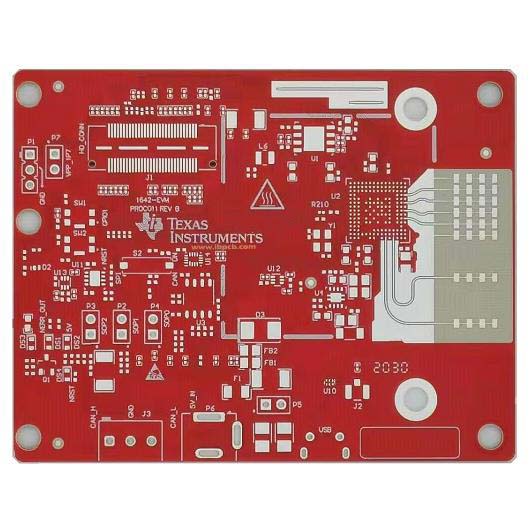Introduction to PCB radar
A radar PCB is a type of PCB responsible for generating, transmitting, and receiving radio frequency signals. It generally includes an antenna structure and radio frequency circuit installed on high-frequency laminated materials. The antenna structure is used to transmit radio frequency signals generated by radio frequency circuits and reflected after hitting objects. The radio frequency circuit is used to generate and receive radio frequency signals after reflection, and analyze them. Therefore, the precision of the circuit on the radar board PCB is important Both stability and reliability have high requirements.

Radar PCB
Application of PCB radar in automobiles
As the main component of electronic devices, circuit boards are widely used in fields such as mobile terminals, base stations, radars, and automobiles. Circuit boards can provide mechanical support for fixing and assembling electrical components such as transistors, capacitors, resistors, inductors, and can also meet the needs of wiring and electrical connections between electrical components. In practical applications, electronic devices may use two or more circuit boards.
Printed circuit board (PCB) materials will be a very important component, and the use of radar systems will greatly enhance the safety performance of automobiles. Radar is a key technology in modern vehicle safety systems. Car radar is a key sensor in advanced driver assistance systems, used for adaptive cruise control, collision avoidance, blind spot detection, lane change assistance, parking assistance, and more.
Millimeter wave radar PCB board is a new type of electronic component that can be used to measure the distance, velocity, and direction of objects. Its main principle is to use the reflection principle of millimeter waves to emit them onto an object, and then receive the reflected millimeter waves to measure the distance, velocity, and direction of the object.
The design and manufacturing of millimeter wave radar PCB boards is a complex process that requires consideration of many factors, such as millimeter wave transmission and reception, circuit design, and circuit board manufacturing. Among them, the most crucial is ultrasonic electronics, which is the core component of the millimeter wave radar PCB board. It can control the transmission and reception of millimeter waves, thereby achieving the functions of the millimeter wave radar PCB board.
Unmanned vehicles have extremely high safety requirements. Therefore, from the perspective of sensory sensors, the integration of multiple sensors such as millimeter wave radar, video cameras, LiDAR, and infrared detectors is an inevitable trend. The onboard millimeter wave radar will be the most core sensor in the future unmanned driving industry.
The unmanned vehicle millimeter wave radar system mainly includes an antenna, a transceiver module, and a signal processing module, and the radar antenna printed circuit board is the hardware core of the millimeter wave radar. The radar system can detect more dangerous road conditions, including icy and snowy roads.
Automotive millimeter wave radar is a key core component of automotive active safety (ADAS) products. PCB radar is beneficial for reducing the number of printed circuit boards in radar modules, making the system miniaturized, highly integrated, and multifunctional; This enables the customer's millimeter wave radar to achieve the best balance between system performance. integrated functionality, and cost.